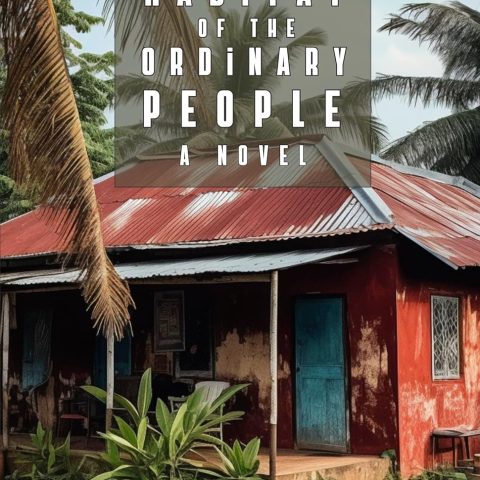COMING TO AMERICA
By Uchechukwu Peter Umezurike
Thursday, December 3, 2009.
“…a generation will come that will call Nigeria Father or Mother, but not yet.”
– Chinua Achebe
The sun has a sorry expression, when we get into the Windy City . It is past one o’clock. The chill is palpable. 11° C or less, someone groans. My lips are chapped and dry like the shell of an acorn. As we clamber out of the minivan, puffing and breathing sorely, I notice many trees still look green and defiant. When we left Iowa City in the early haze of morning, the oak trees seemed to have shed off much of their greenness.
I keep tugging at the collar of my winter jacket to shield the frosty breeze from nipping at my neck. I’m thickly dressed, even in long bottom; still I feel sore.
A writer told me, prior to the trip, that in Chicago I’d get a feel of America . I didn’t make out exactly what he meant, but I suppose he was referring to the bustling traffic. In Iowa City , life moves leisurely, and the day doesn’t run past you.
I long to experience the “feel,” not because of the mythic status Chicago seems to have earned in the days of Al Capone, not because it is significantly predominated by blacks, but because it is home to the tallest building in America and the fourth tallest freestanding building in the world, besides the Taipei 101, Petronas Twin Towers, and the Shanghai World Financial Center.
The Sears Tower evokes an image of something gigantic and galactic and phantasmagoric; something out of Star Wars. The same writer described how breathtaking the view is from the 103rd floor observation deck, how you can see Indiana , Michigan and Wisconsin , how other extraordinary landmarks appear so close and yet sublime before your eyes.
Now the minivan has parked in a suburb of Oak Park ; a landmark precinct that once housed two forward-thinking Americans; two geniuses the world would not forget in three lifetimes. We slowly mill in front of our guide as she glances around to make sure none of us has wandered off.
“We shall start with America ‘s most famous architect,” Kecia remarks. She pauses and scans our faces. I wonder what connection architecture has with creative writing; meanwhile, I don’t intend to set a story in a Gothic or Byzantine era.
We wait for her to go on, but she wants to gauge our interest, I suspect.
“No single individual transformed 20th-century residential architecture more than Frank Lloyd Wright,” she says at last.
We are standing on a sidewalk on Chicago Avenue , then she turns right and points at a sprawling architectural monster. “That’s his private home and studio.”
The building has the air of a museum, olden and historic. The way it crams the expansive space makes me think of a lion surveying the prairie with the eyes of knowledge. It also looks like a sphinx. That instant I think about an invitation to attend Egypt next year.
The roof slopes gently over a low terrace. The chimney is solid, unlike the narrow ones I often see on N. Linn Street , and the walls are made of cured brick as far as I can tell. The overhang is prominent, like a rectangular lip. In short, the entire structure is indescribable: various LEGO blocks impossibly fitted to overlap and complement each other. Strange, but I feel the building seems suspended in mid-air.
The other writers appear stumped, eyes glued to Wright’s inventiveness. A few who can’t hide their amazement murmur excitedly. We are close to the entrance of the compound. And Kecia is trying to decide on the number of people to take along on the architectural tour within the premises; the staff on ground are not enough to manage the over fifty persons hanging around the gate. There is another group that hovers next to us; obviously students, researchers and tourists.
“Is any of you familiar with the phrase organic architecture?” Kecia asks.
Our eyes search each other’s face. Then we affirm our ignorance with a shake of the head. I’m familiar with the phrase “organic” though, since I started grocery shopping in Hy-Vee and Wal-Mart. Most times I have to peer hard through my lens to distinguish what dairy or poultry is organic and which is chemically processed – because the organic produce costs much more than genetically modified foods. Anyway, just as she is about explaining what organic architecture is, I chip in, “As in organic foods?”
She laughs and wags a finger at me. “That’s incorrect…” she pauses and goes on, “Now that might not seem completely imprecise.” Then she explains that Frank Lloyd Wright revolted against historical style of architecture, redefined American residential architecture, and pioneered what she calls, “Prairie House.”
Again she modulates her speech, dithers, and finally waits for us to release questions. She is sounding a bit profound, perhaps more profound than ars poetica. This probably explains why most of us fail to connect totally with her techy-explanation. People can readily admire buildings without wanting to be intimidated by the technicalities. It’s like everyone would like to own a Rolls-Royce, but who cares how much steel and fabric go into its make-up?
“Prairie House?” I repeat. My mind immediately goes back to Prairie Lights Bookshop on S. Dubuque , Iowa City, where I bought Peter Pan, The Prince and The Pauper and other classic books for my daughter. The bookshop, of course, looks quite ordinary, judging by its façade. It is almost obscured by the two buildings breasting it on either side.
“Well,” she begins. “Wright was of the opinion that every building should satisfy social, physical, and spiritual needs. A design should be inspired by nature, and diverse. It should also promote” – She stretches out her hand wide as if to embrace or compress the air around her – “harmony between human environment and the natural world.”
I almost rock with laughter, but I contain myself. That is a most ostentatious artistic vision if ever there is one! It’s an American thing that people must rationalize and philosophize about everything from the complex to the basic; commonplace objects like the kitchen, the living room, the garden, and even dogs are imbued with meanings.
I try to picture the architect’s face. I conclude that he must have gone through a personal turmoil to come up with such bizarre philosophy, like Nietzsche. How could he speak so passionately about wood and bricks fitted to serve man’s convenience!
“His era has long gone,” I muse. “The world is trotting on, bridled by Microsoft, cell phone and Wall Street.”
Kecia must have noticed the droopy look on our faces. “We could do the Hemingway tour if you guys want to,” she suggests.
“Yes, yes,” almost everyone choruses, voices taking on a brisk note.
“OK.”
We stroll down a couple of blocks. We walk past another Frank Lloyd Wright’s masterpiece – the Unity Temple , the home of the Unitarian Universalist; a massive baroque-looking masterpiece. He was a lifelong utilitarian. Granted, he was avant-garde. He couldn’t put up with the wooden design of British heritage.
Some of us pause to take photos of the church. And as we stride past, I glimpse his bio on the plaque. He died a year before Nigeria got independence from the overlord Britain .
We stop at Ernest Hemingway’s Museum, which is exactly on N. Oak Park Avenue . It has a Romanesque façade, with arches, cornices, pillars and engravings. An overbearing expression accentuates its size.
“Guys,” Kecia says. “Here’s the plan. We start with the museum, then end with his house. What do you prefer?”
“His home,” we answer in unison.
Before we set off to his birthplace, which is just less than two hundred yards from where we are standing, some writers stand or squat on the stairs of the museum for photographs. There are two long vertical banners with pictures of Ernest Hemingway – at a young age and when his beard was grey – hanging down from the ceiling between the white pillars.
The stylish way the Gatsby sits on his white hair reminds me of Gabriel Okara and his flat cap; a man whose poetry soothed me during the nightmare that was Abacha’s regime. The poet whom I have been privileged and honored to associate with, courtesy of Nigeria LNG; whom his state government is yet to commemorate as a worthy ambassador of letters – even if it simply meant hanging a mighty portrait of the aged poet in the state museum.
I pose for some photographs, too, wondering when literature will attract some dignity, some notable mention in my country – not the kind of fame that is representative of the art of embezzlement and looting; hoping that my own generation will not consign me to the bleary back yard of oblivion.
Finally we arrive at Hemingway’s house, a simple Queen Anne style home built in 1890 by his grandparents. The building is not as detailed and far-out as Wright’s. People start clicking at their cameras, posing, and the Cuban poet next to me begins to recall his popular works and the years Hemingway spent in Cuba where he wrote The Old Man and the Sea.
There is a kind of hallowed presence that you feel the moment you step through the door, and you just know there is something great about the late Nobel laureate.
A relation of his appears in the doorway. He welcomes us with a smile that is reserved for naturally amiable persons, or a host trained to impress guests without coming off as flattering or patronizing. Despite the biting chill, he is dressed in burgundy polo and twill pants and black leather slip-on.
“These are international writers,” Kecia introduces us, sweeping her eyes over our faces.
“Oh,” the man says, his hazel-nut eyes glowing gently. “That’s amazing. I hope you’d the chance of dropping by at Wright’s residence?”
“We did.” Kecia nods.
“It’s a stupendous coincidence, you know,” says the man. “Just across the street lived his neighbour. Wright was revolting against Victorian architecture while over here Hemingway was turning his back on the Victorian form of literature. Amazing, and they sometimes hung out together.”
He gestures towards the modest dining room. He points at a chandelier that once used gas before electricity was supplied within the vicinity. He gives us a hint of how much restoration efforts have gone into preserving Ernest Hemingway’s birthplace. These people are so damn proud of their nativity and heritage it makes me feel bitter. They are “reckless” in their pursuit of the preservation of history.
Envy suddenly jabs me in the bladder. I feel like dashing off to use the restroom, but I don’t. I want to spit out because of the strange bitterness that coats my tongue. Yet I manage myself, fighting off images of my people. In my homeland, tribute is only given to men who drown the masses’ fortune in an oil-slick lagoon of privation. Only marionettes who warble the ballads of misrule can be so remembered and revered.
Just recently, the laudable mouthpiece of the house approved the wanton purchase of bullet-proof vehicles (limos, Benzes), computers, printers and UPS at unforgivable prices and yet his mouth was wide enough to brag about it. He was not censured, not condemned. Instead, his praises were broadcast everywhere by ants from various hills.
Is such decadent act a subtle inspiration to the coming generation? Should they out-spend him and his bunch of profligate power-drunks when tomorrow’s children finally have the mace to themselves? Is this not a rape of prudence in a country where majority of the citizens can only afford sachet powdered milk?
I am forced to wonder what stops the enlightened senators from passing a bill to erase the stench of names of looters that litter our street signs and monuments. Is it because our country has been ruled more by illiterates than by the learned? Is it because only plunderers and dream-slayers are worthy of being gilded and garlanded in Abuja ?
There is a day to commemorate fallen soldiers, some of whom might have died while shirking their gallant duties to ransack villages and to rape young girls. Like the Odi and Zaki Biam episodes. There is no observance to celebrate Soyinka, JP Clark, Flora Nwapa, Mabel Segun, Olaudah Equaino and other heroes and heroines of literature.
While the sensation spawns more questions in my head, I notice some writers have slipped out their wallets and paid the token admission fees. As I dip a hand into my jean pocket, the guide explains that the birthplace is open from Sunday to Friday. Any one of us could still visit again, to see the grand rooms, rich with Victorian décor, the family pieces and heirlooms.
The guide leads us round the living room and the bedroom. I glance at some of the family photographs, wondering about Africa’s most celebrated literary giant, who, although recognized world-over, faces indifference and scorn at home. The nostalgic contents of the keynote speech – he presented on October 9, when The Guardian marked its Silver Jubilee in Lagos – waft into my head. Chinua Achebe loaded his speech with so much palpable emotion that I was wracked with a terrible heartburn and had to pause every so often while reading the speech.
But a smile soon warms my heart and dissipates the sensation. I feel uplifted by the recollection of the manner in which the President and his VP rejected the proposed naming of streets after them in Abuja . I heard he even instructed that the streets should be renamed, for only the megalomaniac would name a street after himself while he was serving the public.
As I stand on the porch of Ernest Hemingway, it occurs to me that the three men – Achebe, Wright and Hemingway – share a similar attribute; they revolted against limitations; against anachronism; against stereotypes. They redefined the convention and thinking of their period.
Most of the writers look subdued as we file out of the historic building. The clouds have darkened over the Midwestern skies. The chill has grown sharper teeth, more biting. The trees shriek out a tune as mournful as an elegy. We race towards the minivan, eager to check into The Seneca Hotel.
I squash my body in the back seat and reach for a novel, a parody of Idi Amin, titled The General is Up. Anger is pointless, anger is impotent, I say to myself. Time is a storm. The same wind that blows the passenger blows the driver as well. For every time has its legend, and every blackout its burst of light.
Uchechukwu Peter Umezurike is a Nigerian writer. He has won awards in poetry, short story and children novel. He is the author of Dark through the Delta (poems), Tears in her Eyes (short stories) and Aridity of Feelings (poems).
�
Send to a friend | �
View/Hide Comments (0) | �





